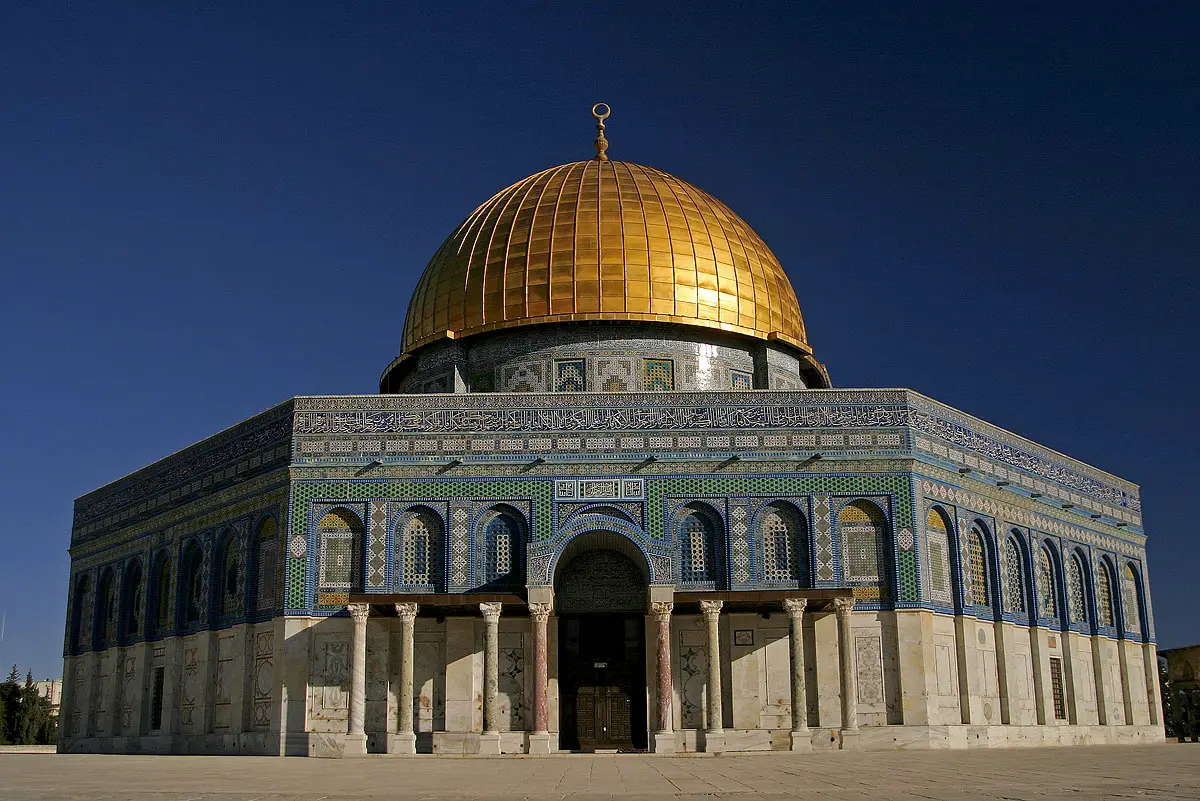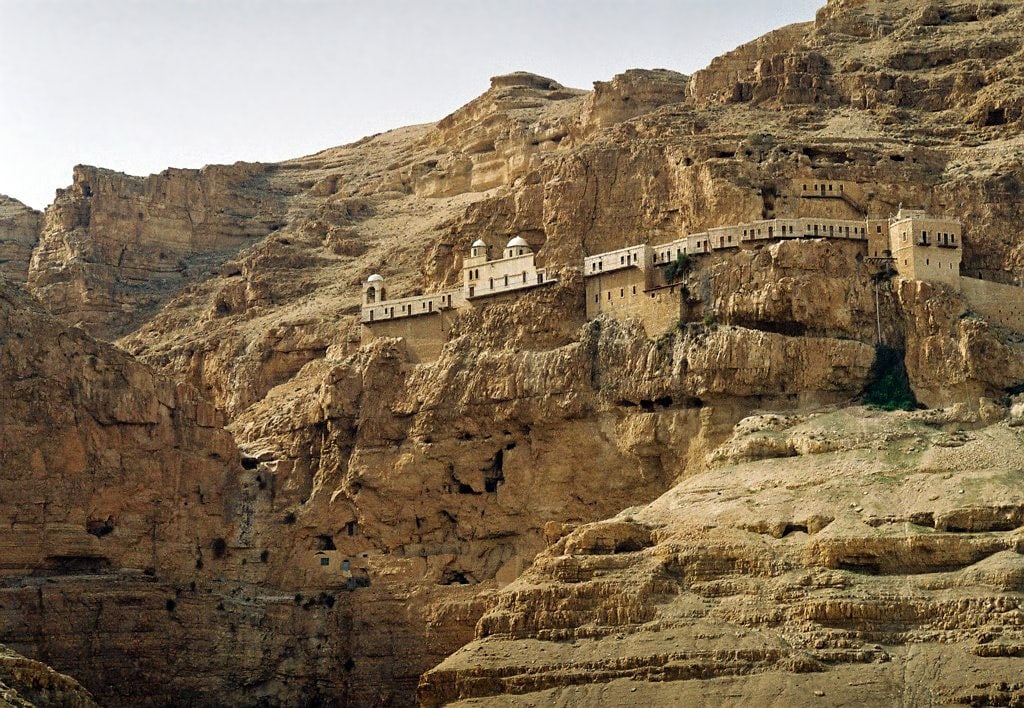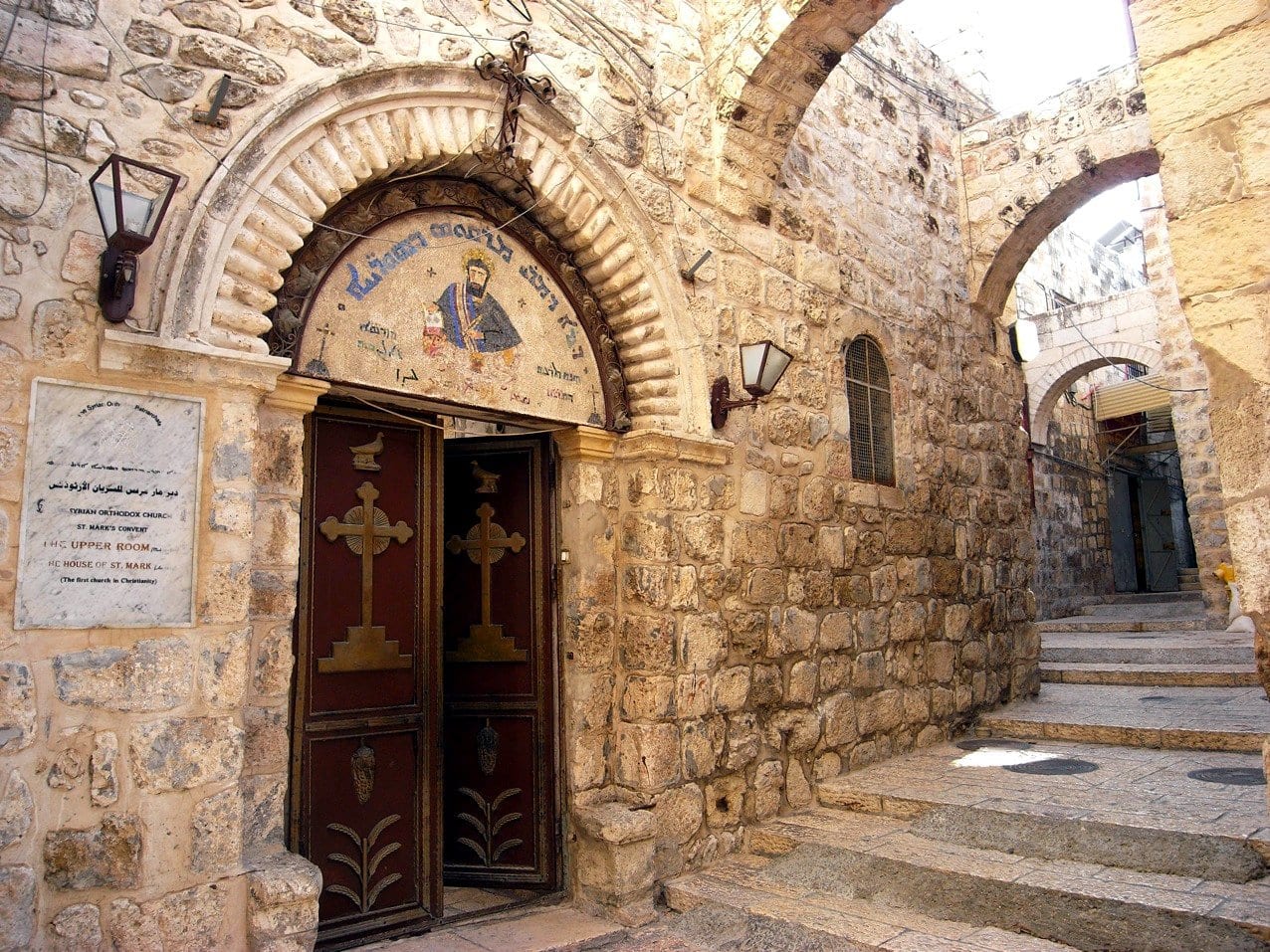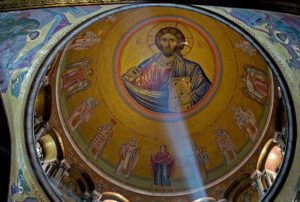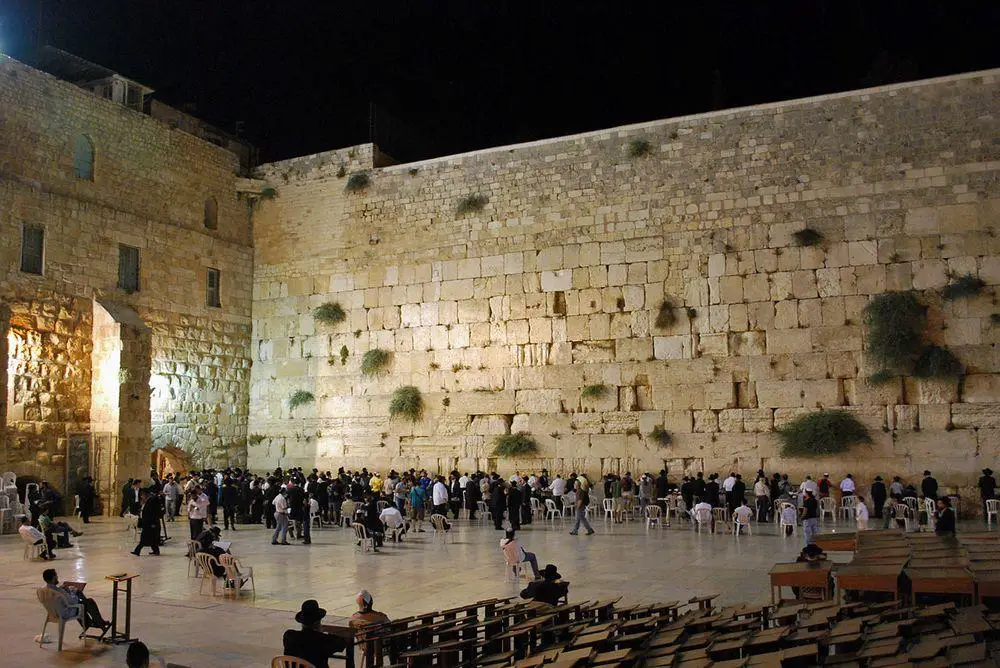Wondermondo 🢖 World 🢖 Wonders of Asia 🢖 Wonders of Palestine
Territory
Wonders of Palestine
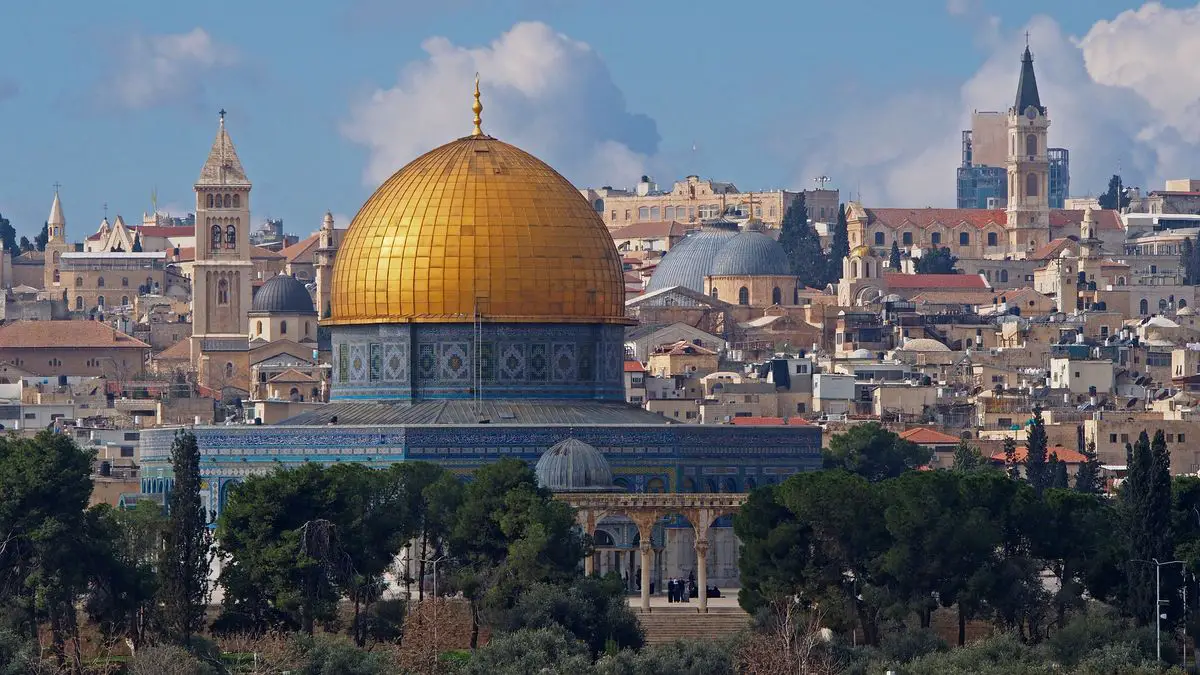
 Highlights
Highlights
Palestine has very special wonders. This land has experienced the birth of Judaism and Christian religions and plays a very important role also for Muslims. Billions of people see this land as the place of divine presence, with many sites linked to events of extremely high importance for believers and historians.
The most amazing wonders of Palestine are located in Jerusalem and these are:
- Holy Judaism sites. Here are concentrated the most important shrines of this ancient religion.
- Holy Christian sites. Some of the most important Christian shrines are located in Palestine as well, such as – the Church of the Holy Sepulchre, the Church of the Nativity, and many others.
Palestinian territories consist of two disjunct areas:
- Gaza Strip
- West Bank
Map with the described wonders
If you see this after your page is loaded completely, leafletJS files are missing.
 Top 25 wonders of Palestine
Top 25 wonders of Palestine
Archaeological wonders
Jericho – Tell es-Sultan
West Bank
The lowest inhabited place and possibly – the oldest continuously inhabited city in the world. Already at 9400 BC, there lived more than 1000 people, the city was fortified with a more than 3.6 m tall wall and there was a stone watchtower with a stone stairway. Since then the city has been several times abandoned and resettled – also today there is a city next to the old mound.
Tomb of the Prophets Haggai, Zechariah, and Malachi
West Bank
Rock cut tombs – catacombs, where the last Hebrew Bible prophets might be buried. Created around the 1st century BC. In the cliff are hewn two concentric passages with 38 burial niches.
Hisham’s Palace
West Bank
Remains of the Umayyad winter palace, built in 743 – 744 AD. Palace was adorned with exquisite mosaics. Destroyed in 747 AD by an earthquake. Includes depictions of semi-naked women – unique in Islamic art.
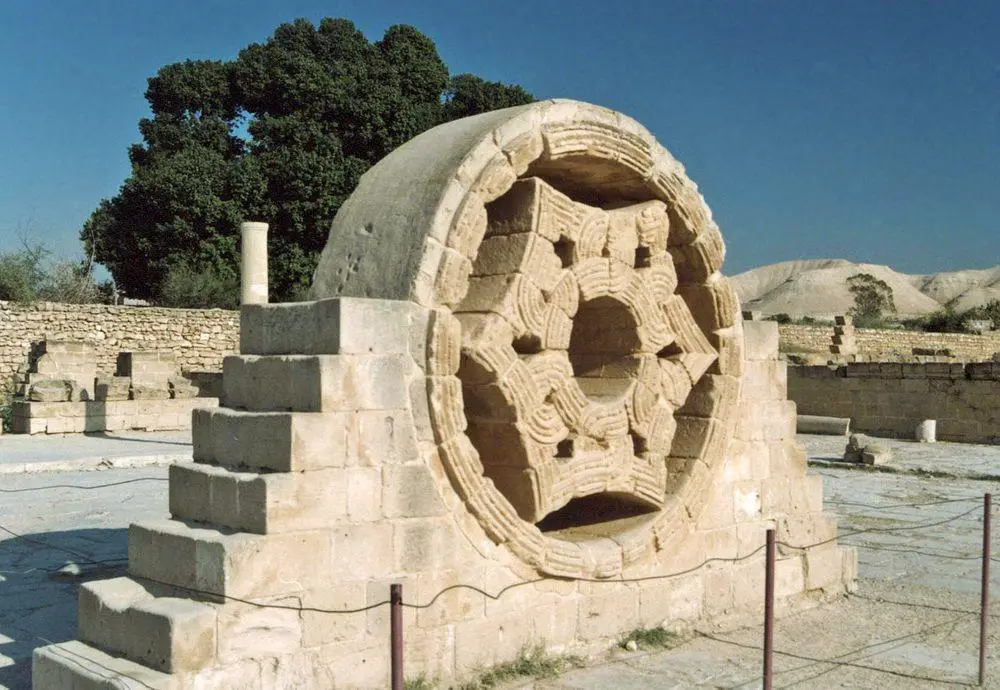
Underground passages and necropolis under the City of David
West Bank
The most ancient city in the area around Jerusalem, inhabited since Bronze Age. Contains multiple underground passages, and elaborate rock-cut tombs from the 9th – 7th centuries BC for the high-ranked people of the time.
Tell Umm el’Amr
Gaza
One of the oldest monastic complexes in the world, founded in the 3rd century AD by Saint Hilario. Contains beautiful mosaics.
Herodium (Herod’s Palace)
West Bank
Ruins of an impressive hilltop fortress, built by Herod in the 1st century BC and destroyed by Romans in 71 AD.
Caves of Qumran
West Bank
11 caves, where nearly 900 Dead Sea Scrolls were discovered. Near the caves are ruins of some ancient structures.
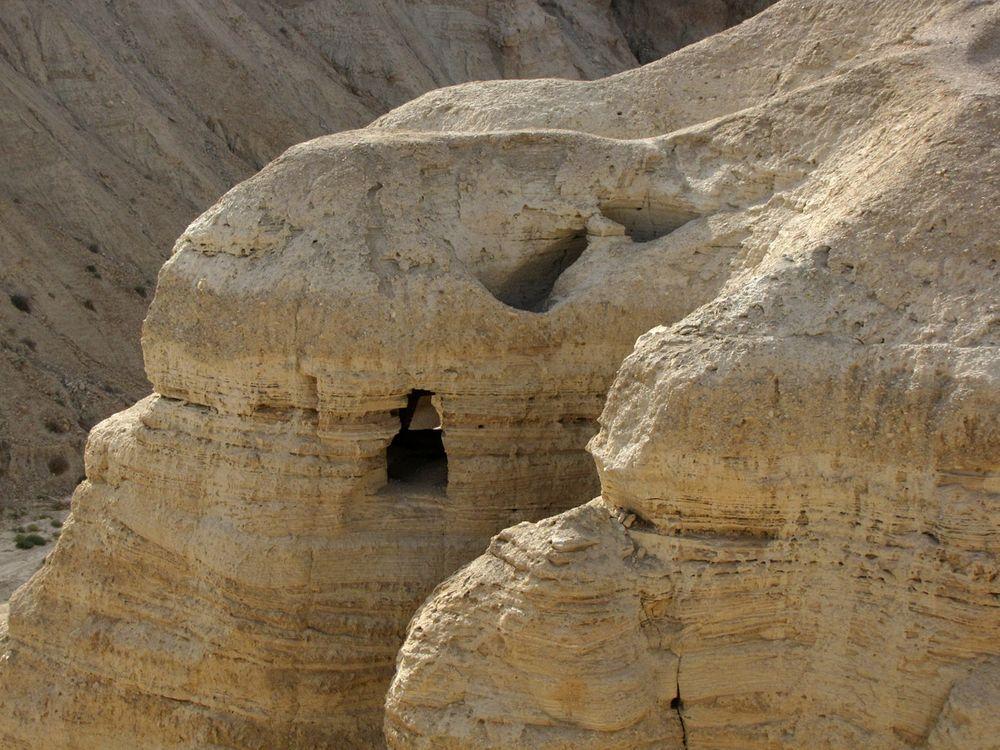
Architecture wonders
Jerusalem Old City
West Bank
One of the most important and holiest cities in world history, one of the oldest cities that was settled in the 4th millennia BC. Contains hundreds of monuments of world importance, such as the Dome of the Rock, Temple Mount, Wailing Wall, Church of the Holy Sepulchre, and al-Aqsa Mosque. Crossed by Via Dolorosa – the path where Jesus carried his cross.
Temple Mount
West Bank
A sacred site of huge importance for many millennia. This has been a sacred site for Judaism, Christianity, Islam, and Roman paganism. According to Judaism some aspect of Divine Presence is present here. On the mount has been built Al Aqsa Mosque – the third most sacred site for Muslims and the Dome of the Rock with Foundation Stone (the most important site for Judaists), as well as several more valuable structures. Also – one of the most contested religious sites in the world, especially between Judaists and Muslims. Here started the development of Jerusalem in the 4th millennium BC. Under the Temple Mount is a maze of underground passages.
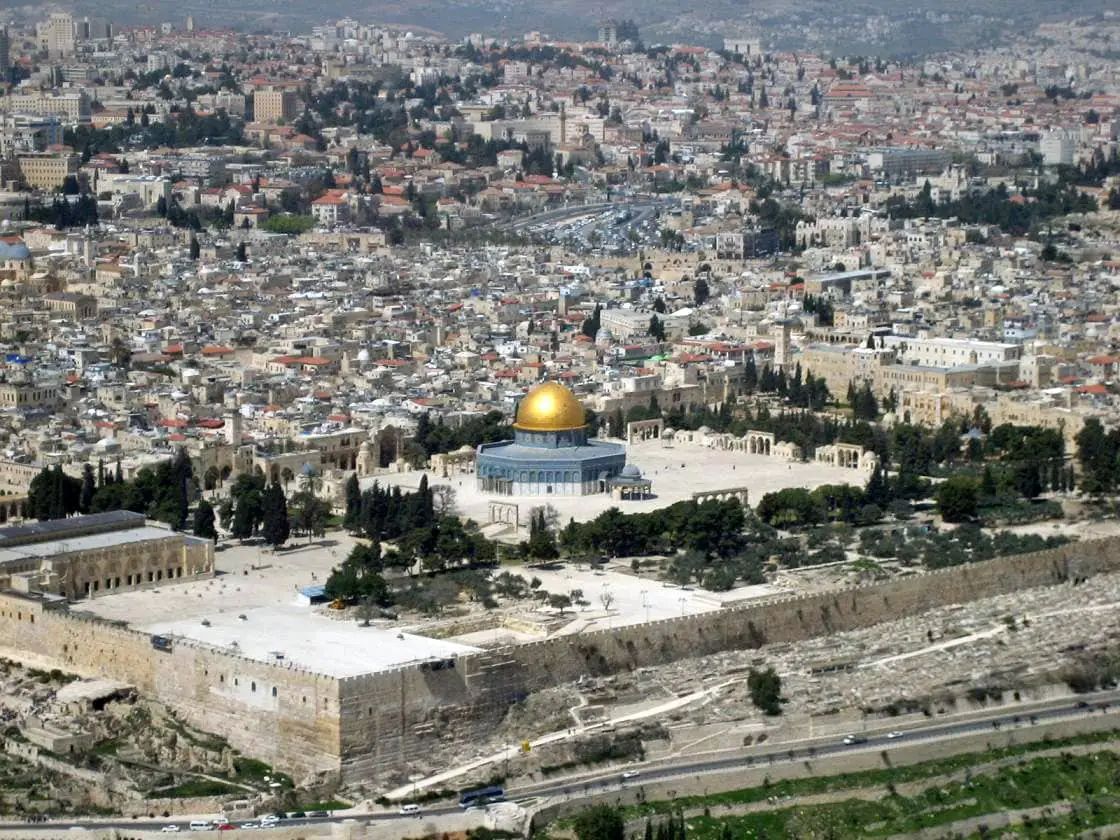
Al-Aqsa Mosque
West Bank
One of the holiest sites in Islam – Muhammad was transported here during the Night Journey from Mecca. The second oldest mosque, originally built in the first half of the 7th century. The current building is from 1035. Located on Temple Mount – the holiest site in Judaism.
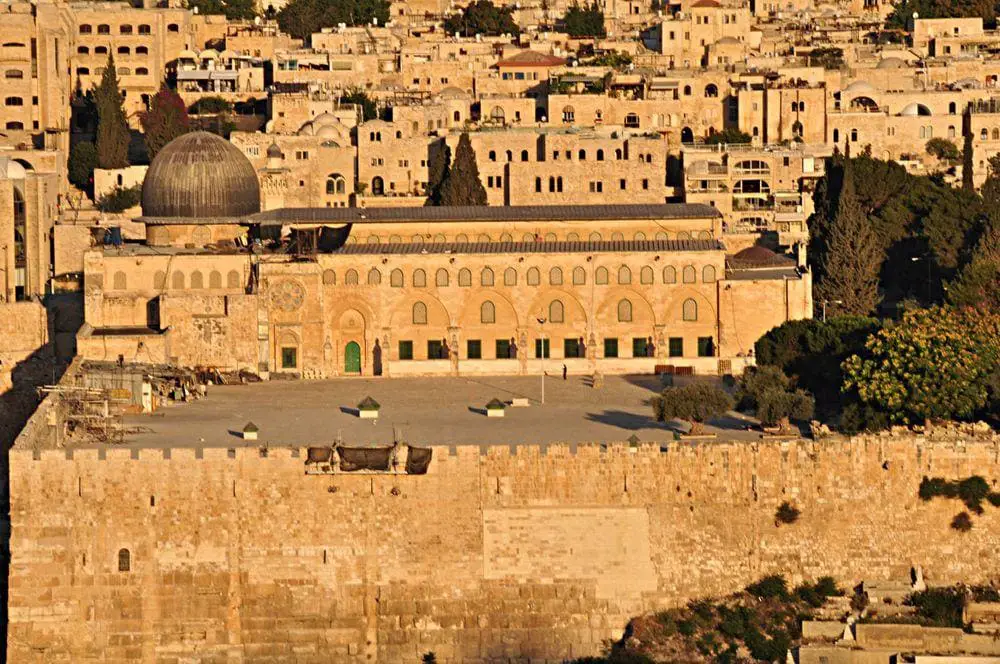
Dome of the Rock
West Bank
A Muslim shrine, built in 691 AD over the Second Jewish Temple and refurbished many times since then. Intended as a shrine for pilgrims and not a mosque. The building is not typical for Islamic architecture (in Byzantine style) as this was an attempt to compete with Christian and other architecture in Jerusalem. At the heart of this building is Foundation Stone – the most sacred site for Judaists. The large, gilded dome of this building is one of the most noticeable features in the Jerusalem skyline. A model for Templar churches around Europe.
St. George Monastery (Monastery of Choziba)
West Bank
This cliff-hanging monastery is located in a narrow canyon. It started in the 420ies and became a monastery in 500 AD. This Greek Orthodox monastery is active up to this day. Here are important relics of three saints and the site is linked to Biblical history.
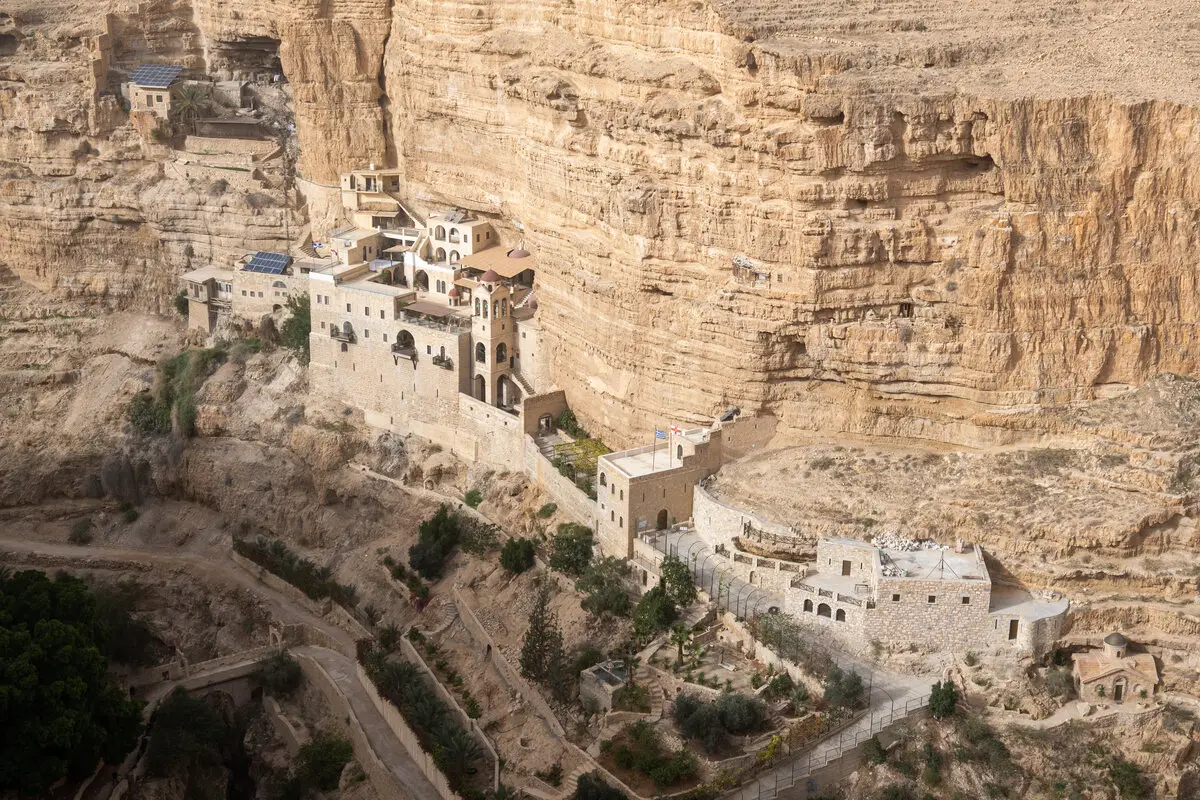
City of David
West Bank
The oldest part of Jerusalem – the biblical Jerusalem. Narrow ridge south of Old Jerusalem. Sign of habitation since 4500 BC. The walled city existed here in Bronze Age, around 2000 – 1550 BC. King David reportedly built his palace here and established his capital. Currently inhabited. Under the city runs Hezekiah’s Tunnel – an ancient water supply tunnel.
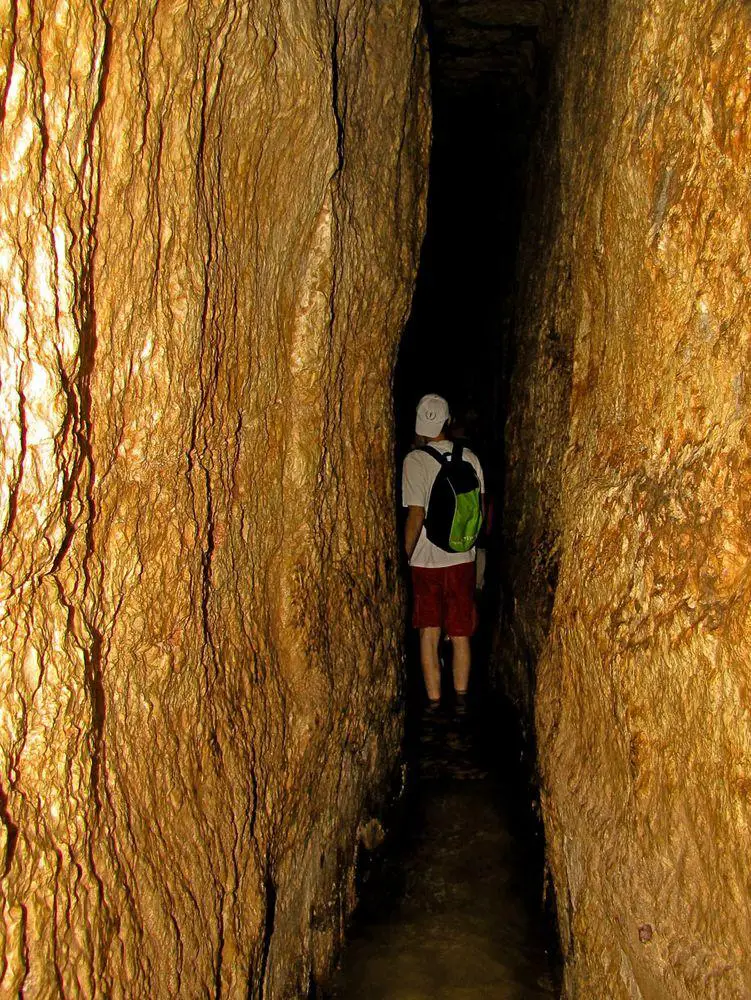
Monastery of the Temptation
West Bank
Monastery in a dramatic setting at the cliff face. The first monastery was developed here in the 6th century around a cave where, according to a legend, Jesus spent forty days and nights fasting and meditating. The monastery was rebuilt in 1895.
Mar Saba
West Bank
This monastery was founded in 439 AD and is active up to this day. Located in a dramatic setting, on a steep cliff of the canyon.
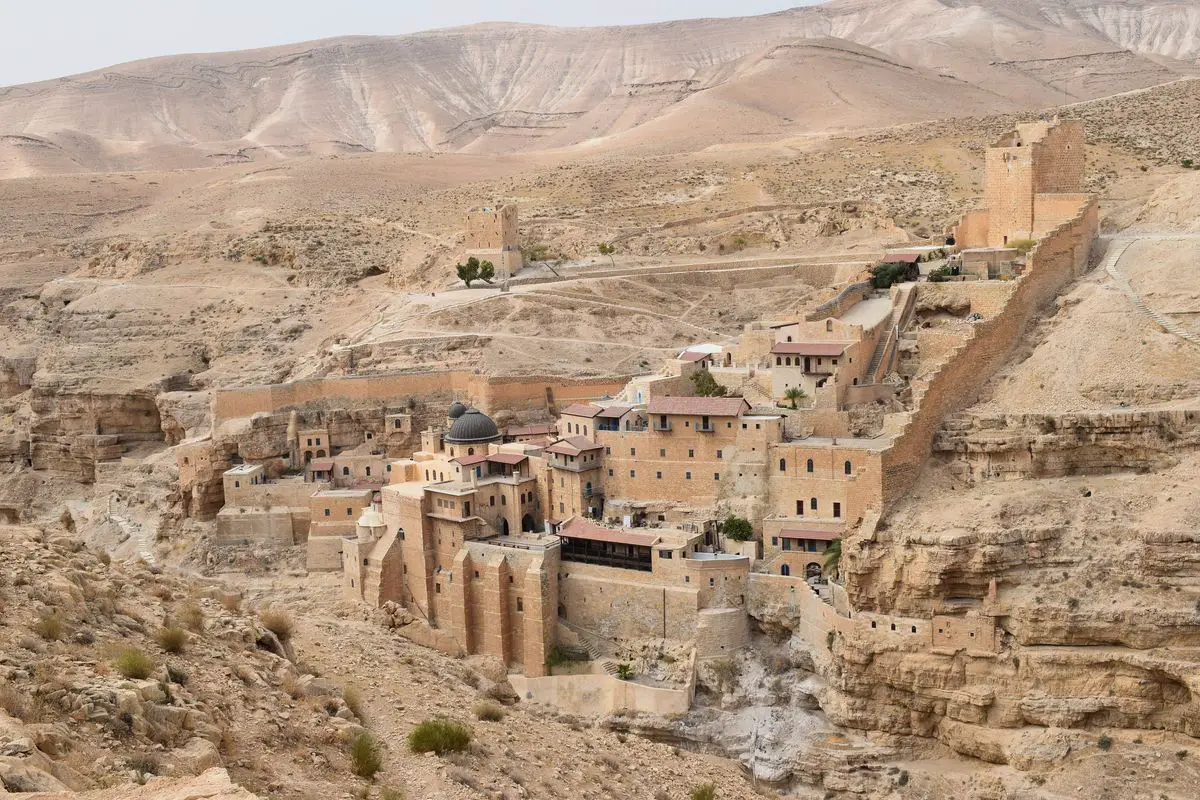
Dome of the Chain
West Bank
One of the oldest structures on Temple Mount – a free-standing dome, built as a prayer house for Muslims in 691 AD, although some parts are pre-Islamic. According to legends, this is a site where a chain between Heaven and Earth was suspended and where Judgement Day will occur.
Nablus Old City
West Bank
A fine representative of urban planning heritage in Palestine. The city was founded in 72 AD by Romans and flourished in the Byzantine and Umayyad periods. Thousands of historical buildings.
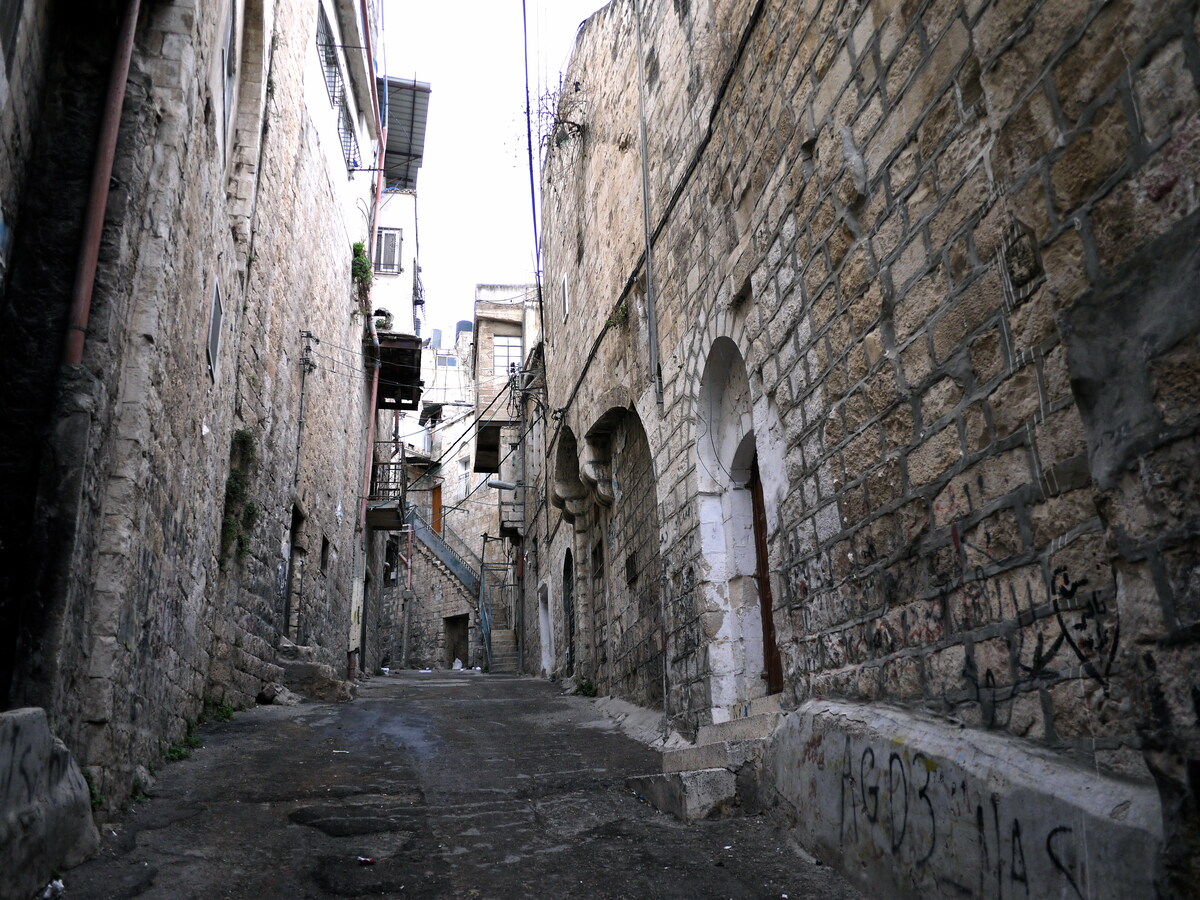
Chapel of the Ascension
West Bank
A site where according to Christian legend Jesus ascended into Heaven. After several centuries of secret worship, a church was built here around 390 AD and destroyed several times since then. The current chapel was built roughly in 1150 and contains Ascension Rock with a footprint – reportedly, the right footprint of Jesus – the last point on Earth touched by him.
Cathedral of St. James
West Bank
The main Armenian church in Jerusalem, built around the 12th century. Here reportedly was sentenced James – brother of Jesus.
Syriac Orthodox Monastery of Saint Mark, Jerusalem
West Bank
The Syriac Orthodox Monastery of Saint Mark contains a library with valuable manuscripts. This is the possible site of the earliest Christian shrine in the world.
Church of the Holy Sepulchre
West Bank
One of the most important churches for Christians, it is said to be located at the place where Jesus was crucified and buried. A pilgrimage site since the 4th century, the church was built in 335 AD and rebuilt several times; the last time was in 1048 and since then it has been renovated.
Mary’s Tomb
West Bank
Purported burial site of Mary, the mother of Jesus – as believed by Eastern Christians. Her tomb was empty on the third day. Here has been built a shrine – the current one in the 1130ies. From the shrine, one enters the underground tomb.
Chapel of Saint Helena
West Bank
Armenian church from the 12th century, originally made by Crusaders on the premises of Hadrian’s temple.
Church of Saint Porphyrius
Gaza
An old church, originally built in the 5th century AD. The current one was built by Crusaders in the 1150ies or 1160ies, largely rebuilt since then.
Western Wall (Wailing Wall)
West Bank
An important Jewish religious site, it is the only remaining part of the Second Temple. It was constructed around 19 BC. Throughout history, this also has been an important site for the politics of the Near East, due to different events related to the access of the Jews to this wall. The wall is exposed for 60 m, additional 485 m are available along a Western Wall Tunnel. Contains Western Stone – 517 tonnes heavy monolith, one of the largest building blocks in the world.
 Recommended books
Recommended books
Fast Times in Palestine
Fast Times in Palestine is Olson’s powerful, deeply moving account of life in Palestine—both the daily events that are universal to us all (house parties, concerts, barbecues, and weddings) as well as the violence, trauma and political tensions that are particular to the country. From idyllic olive groves to Palestinian beer gardens, from Passover in Tel Aviv to Ramadan in a Hamas village, readers will find Olson’s narrative both suspenseful and discerning. Her irresistible story offers a multi-faceted understanding of the Palestinian perspective on the Israel–Palestine conflict, filling a gap in the West’s understanding of the difficult relationship between the two nations.
Palestine (Bradt Travel Guides)
Go on a pilgrimage to the sites of Christ’s birth and burial, stroll through Nablus’ bustling souk and follow with a relaxing soak and smoke in the city’s traditional hammams, or visit cosmopolitan Ramallah and its international arts center. Bradt’s Palestine is for independent travelers who want to see beyond the conflict-focused reporting of the area and ethnic and religious stereotypes. The only mainstream guide dedicated solely to Palestine, it offers unparalleled detail on Palestinian culture, cuisine, wildlife, environment, history, and politics. The ‘Palestinian Territories’ of the West Bank and Gaza are featured along with the culturally Palestinian (Israeli Arab) enclaves found within Israel.

